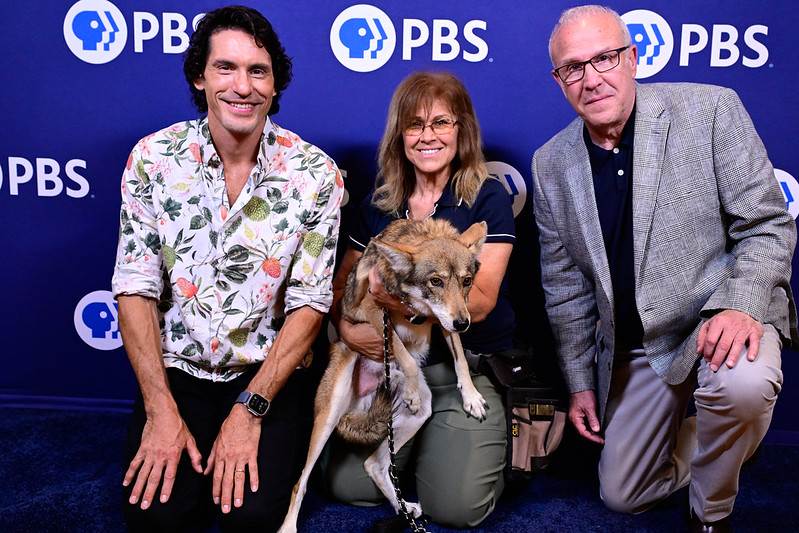San Diego, a bustling urban center known for its beaches and sunshine, is home to the most biologically diverse county in the United States. In the new PBS Nature documentary special, San Diego: America’s Wildest City, viewers are invited to explore this surprising wilderness, guided by an array of species that thrive amid the city’s unique geographical tapestry. In a recent TCA press conference, the filmmakers and experts behind the documentary shared stories of filming in the heart of this urban jungle, from rare animal encounters to educational partnerships aimed at connecting locals with nature in their backyards.
According to Nature Executive Producer Fred Kaufman, San Diego’s landscapes and climate create a “perfect storm” for biodiversity. He opened the discussion by sharing, “San Diego, a city with a human population of 3.3 million, is actually the most biologically diverse county in America.” Situated “between the Mojave Desert, the Pacific Ocean, the Sierra mountains, and the Mexican border,” San Diego County supports “a vast array of wildlife, from rare hummingbirds and bobcats to rattlesnakes and coyotes.” This blend of ecosystems even includes “bioluminescent algae that light up the coast at night,” creating a stark contrast with the city’s modern sprawl.
The documentary’s director, Nate Dappen, brought along one of the documentary’s unique subjects: a South Pacific rattlesnake. As Dappen lifted the snake’s container, he mentioned, “We’ve worked with a bunch for this show, and this one is a little bit crazier than the other ones we’ve worked with.” Despite its temperament, he described it as “a very cool species” and underscored the importance of educating the public about often-misunderstood wildlife, from rattlesnakes to coyotes, that coexists with the city’s human population.
One of the most challenging yet rewarding storylines for Dappen was capturing the life of western grebes. Filming these birds required dedication, as it spanned over a year across multiple locations. “We filmed the grebes over a period of about a year on three different reservoirs,” he explained, describing how the “stories kind of unfold in different ways depending on what happens with the water behind the dams.” To bring the story to life, he noted that “all the babies come from Otay Reservoir… they weren’t all the same chick,” showing the efforts needed to film these sensitive animals in their natural habitat.
Dappen shared that a central aim of the documentary is to inspire San Diego residents to appreciate and explore the local wilderness. “We really wanted to create something that San Diegans would say, ‘Oh, this is awesome. I’m going to go take my kids on a grunion run… I’m going to go see the grebes on Lake Hodges,’” he explained. This focus on accessible, local wildlife is intended to encourage families and individuals to engage with their surroundings, sparking a greater appreciation for nature.
San Diego’s diverse ecosystems make it an ideal home for many species. Dappen outlined the unique geographical and climatic conditions that define the area, saying, “It’s got the Humboldt Current in the Pacific that brings all these resources… It’s got the mountains. It’s got the desert in Baja. It’s got chaparral. It’s got canyons.” This range of habitats, combined with the local climate, “creates this sort of Goldilocks effect where there’s just a ton of species there.” San Diego is also positioned along a major bird migration route, adding to its extraordinary range of avian life.
As the documentary illustrates, San Diego’s urban sprawl intersects with its wildlife, posing challenges to conservation and public perception. Dappen discussed shifting attitudes toward wildlife. He highlighted the importance of fostering a connection to urban nature early on, noting that “it’s about educating kids” and helping people “fall in love, not with the nature over there, but with the nature in their backyards.”
In an exciting development, Kaufman announced a partnership between Nature and the San Diego Natural History Museum. “WNET and PBS, they’re working with us and, together, with the San Diego Natural History Museum to create an adaptation of this that will be one of the resident films at the Natural History Museum,” he shared. The museum is also developing an online guide, which will “basically give people guides about where they can go find these things,” ensuring that audiences can continue learning and exploring San Diego’s wildlife beyond the screen.
One scene in the documentary features an unexpected predator-prey relationship between roadrunners and hummingbirds during an urban “superbloom.” Dappen described the discovery, sharing, “We were up there filming the hummingbirds… and it turned out that when you get the density of hummingbirds, all of a sudden, species that don’t eat them normally start spending a lot more time looking for them.” This surprising behavior, where “roadrunners… start coming and waiting underneath feeders for hummingbirds,” is a testament to how urban environments foster unique wildlife dynamics.
Coyote encounters are common in San Diego, and Benay Karp, an animal handler who works with coydogs (coyote-dog hybrids), shared insight into how these animals have adapted to urban life. She explained that coyotes thrive in the city thanks to human-supplied food sources, saying, “They are so skittish. And that’s the key to their survival.” Karp advises that people practice “hazing” coyotes by making noise to discourage them from getting too comfortable around humans, ensuring the animals retain a natural fear of people.
San Diego: America’s Wildest City offers an eye-opening look at the wildlife coexisting alongside one of California’s busiest cities. From rattlesnakes to coyotes and grebes, the documentary showcases the extraordinary adaptability of these creatures and encourages viewers to appreciate the beauty and complexity of the nature around them. With breathtaking cinematography and a focus on education, the film not only tells San Diego’s wildlife story but also empowers locals to participate in conserving it.
NATURE San Diego: America’s Wildest City premieres Wednesday, November 6th, at 8:00 p.m. ET on PBS, PBS.org, and the PBS app.


